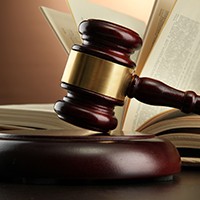Last updated: July 10 2024
CRA Legal Action: How to Help Delinquent CERB Recipients

Evelyn Jacks
CRA will start legal action to collect 9.53 billion in overpaid pandemic supports like CERB, Canada Recovery Benefits and Canada Recovery Caregiver Benefits. This is a very large number, representing half of the amount of expected taxes to collected by the new capital gains inclusion rate increase to 66 2/3% over $250,000. Are you or your clients feeling the pinch? Here’s what to know to soften the blow:
The Ostrich Approach Won’t Work. CRA will only take legal action if recipients have no responded or co-operated. So responding to any CRA communication and in particular a legal warning is an important first step.
When Does Legal Action Commence? CRA will have made up to three attempts to collect the debt verbally by phone and will have sent one warning letter. The legal warning is valid for 180 days and legal action can be started at any time. CRA can also renew this legal warning a second time, but now, only one warning is required – either in writing or with a call. So, again, don’t ignore this because there are very expensive consequences.
What Can CRA Take? CRA can proceed to do garnishee income that will reduce monthly cash flow or take money in accounts you have. This can cause significant financial stress, causing the taxpayer to have to cash in more savings to survive. Worse, it can cause marital or workplace strife and loss of reputation.
- Who can they ask for money? It can include your spouse, employer, business partner, a director, a corporation, a financial institution. They can also ask another government department that may owe you money to intercept it.
- What funds can they take? The CRA can redirect funds from you to the CRA including
- Canada Pension Plan benefit (CPP),
- Old Age security benefits (OAS)
- The GST/HST credit
- Future income tax refunds
- In the case of federal employees,your paycheque
- Which assets are at risk? CRA can take personal or business assets to secure the debt you have with them including placing a lien on the asset or taking personal property like:
- Your principal residence, car, cottage, or boat.
- Artwork you may own
- Rental property or business property you may own
How to mitigate damage. There are three steps to take right away to ensure income is not garnisheed and assets are not seized or subject to a lien:
- Review prior T1 filings for errors or omissions. If you missed filing a return or made a mistake, there may be a refund coming. While CRA will take it to pay the debt, it will reduce the balance due.
- Take control with a payment plan. Better you decide where the money comes from. If you have investments, tapping into a TFSA (Tax Free Savings Account) will have a better tax outcome than withdrawing money from an RRSP (those Registered Retirement Savings Plan withdrawals are not only taxable, but subject to a withholding tax – so that the amount going to the debt is net of this.) You may also have a cash surrender value in a life insurance contract. Seek help from a professional advisor to assess your options for the most tax-efficient way to pay the debt.
Borrow from a family member or a financial institution. The interest costs paid to those third parties may well be cheaper than paying fees to defend against CRA legal actions. Unfortunately, under the rules of the Income Tax Act, any interest and penalties paid to CRA are not deductible.
Some good news: CRA did not charge any interest on the debts incurred for these pandemic support payments received in error. Plus, any repayment of CERB, Canada Recovery Benefits and Canada Recovery Caregiver Benefits should be offset by an adjustment to the tax return in the year in which the benefits were received. The amounts should no longer appear as income, and therefore a refund will be possible. Get help from a professional tax specialist with this adjustment.
Accounting or legal fees paid to prepare an objection or an appeal for an assessment of income taxes or the repayment of CPP/QPP, or EI premiums are deductible, less any reimbursements received for such costs. As these pandemic support payments were taxable, as explained above, this deduction for professional fees should apply to the defence of the legal actions for the repayment of these pandemic support benefits as well.
Perhaps best of all – you don’t have to face anyone at the CRA to clear up your debt. You can provide a debit card, credit card, money transfer, wire transfer, cash or cheque for example.
It’s unfortunate that the government paid these benefits without qualifying so many recipients first. What do you think of this turn of events for these pandemic support delinquents?
Answer the Knowledge Bureau poll question on this topic today:
Starting in July, CRA will provide legal warnings to recover more than $9 billion of overpaid pandemic recovery benefits like CERB. Do you think that’s fair? Vote now!
